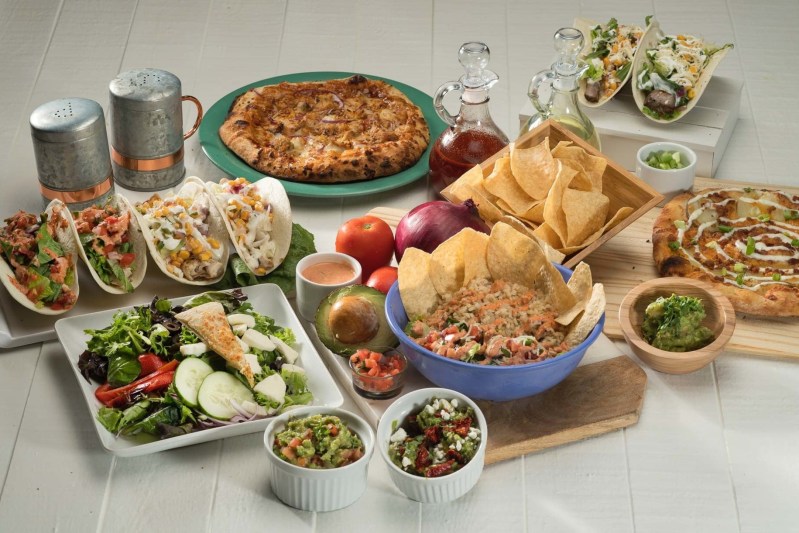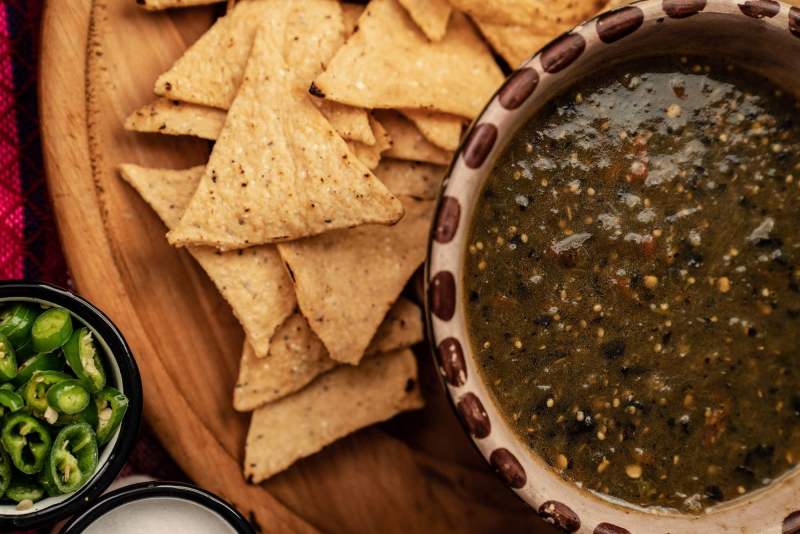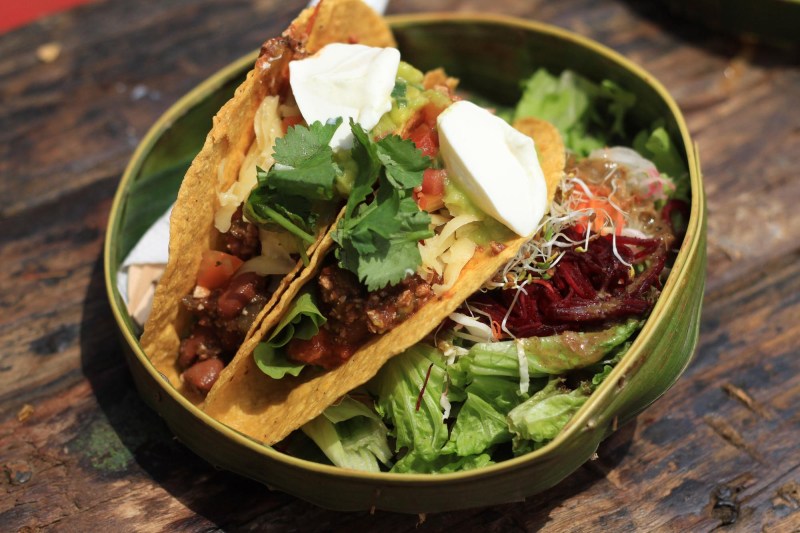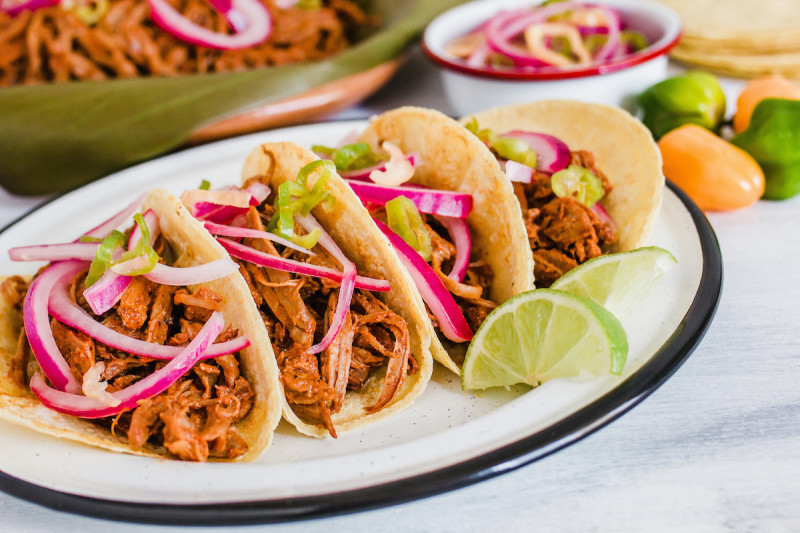There is a deep connection between Mexican cuisine and its people; each having social and cultural traditions. Different celebrations mean different meals are shared where the prepared food is usually at the center of it all.

Mexican cuisine has gained popularity and has become one of the greatest cuisines in the world. Simple dishes with complex flavors are said to have originated in the state of Oaxaca, Mexico, known as the food capital of Mexico. Corn has been grown and cultivated there since around 7,000 B.C. and remains a strong component in dishes today.
Related Guides
The History of Mexican Cuisine
The indigenous people of Mexico were hunter-gatherers and their diet consisted of corn, beans, chili peppers, squash, tomatoes, sweet potatoes, game, and some insects. When the New World was discovered, it changed the then-sustainable culinary landscape. If forged new ideas, new traditions, and new styles of preparing meals.
Among the items the Spanish carried with them were citrus seeds and animals such as pigs, cows, and chickens. The discovery led to other cultural influences such as from France, Africa, and the Caribbean, each infusing their traditions with local ingredients.
Read more: How to Fold a Burrito
The Regions of Mexican Cuisine
Mexico is a large country divided into seven distinct regions and at least nine ecosystems. The landscape can change drastically from high-rugged mountain ranges to deep canyons, volcanoes, dry deserts, and tropical forests.
- Baja California – there is an abundance of seafood such as fish, shellfish, and squid. More inland is conducive for growing grapes, avocado, strawberries, mangoes, lettuce, and corn.
- The North – The climate is too arid to sustain many crops but instead, they raise cattle, make cheese, beer, and grow wheat.
- The Central Pacific Coast – This region has seafood, tropical fruits, rice, sugar, wheat, tequila, agave, and chiles. The town of Tequila is also home to popular hot sauce brand Cholula and this is where tequila brand José Cuervo was created.
- The Central Highlands – The highlands are home to some of the largest silver mining operations in Mexico but they also focus on pork, corn, turkey, agave, garlic, onion, beans, and tomatoes.
- The Gulf Coast – There is a bit of Caribbean influence in dishes and a large variety of fish, seafood, citrus, corn, tomatoes, sugar, and vanilla beans. Incidentally, this region is the largest cultivator of the cacao bean which is made into chocolate.
- Southern Pacific Coast – Home to Oaxaca, they grow chiles, corn, beans, tomatoes, tomatillos, and also make a mozzarella-style cheese known as Oaxacan Cheese.
- Yucatán Peninsula – This area is also known for its Caribbean influence. Here you will find plantains, habanero peppers, bitter oranges, onion, and barbequed pork called Cochinita Pibil.
The Staples of Mexican Dishes

There are three widely used ingredients in Mexican cuisine, corn, beans, and chili peppers. All three basic ingredients are indigenous to Mexico and are inexpensive to grow. Much of the dishes you find will have some sort of corn as the ingredient such as tamales, pozole, and of course, tortillas. Tortillas were used as their utensils and they would pick food up using the tortilla and eat it, thus creating the taco and later, the burrito.
The most popular type of beans in Mexico are the pinto bean and the black bean. Beans are used in salsas, soups, and they also make fantastic stand-alone side dishes such as refried beans, and frijoles borrachos (drunken beans).
The Mexican word for sauce is salsa. Salsas usually include some type of chili and range from mild heat to extremely spicy. Not all food is spicy like it is in the United States, in Mexico they chose chili for their ability to deepen the flavor. Of course, that’s not to say there isn’t a heat factor to some of the cuisines.
Read more: Authentic Taco Recipes
Mexican Food in the United States

Much of the Mexican food you find in the United States was an American invention. I know it may be difficult to hear, but those chips and salsa baskets, the fajitas, and chimichangas all originated in America. Did you know even the Margarita is an American idea? There is some controversy over who created it, but it definitely wasn’t made in Mexico.
Some of the best Mexican restaurants are found in the United States. Some are large chains, and some are family-owned restaurants with recipes passed down from generation to generation, then there are those that have devoted their life’s work to learn more about this particular cuisine.
Take Barrio Cafe for instance. Chef Silvana Salcido Esparza is making “Comida Chingona” or “Badass Food” in Phoenix, Arizona. Chef Silvana learned how to cook in her family home and then traveled across Mexico after graduating culinary school. She opened Barrio Cafe and it soon became a hotspot for some of the best Mexican food around and was featured on Diners, Drive-ins, and Dives.
Another popular restaurant is South Philly Barbacoa by Chef Cristina Martinez. She first appeared on an episode of Netflix’s Chef’s Table. Chef Cristina is re-creating dishes she learned as a child in Mexico. When she immigrated to America, she cooked and sold food out of her home in order to support her and her daughter. Shortly after that, she was able to open a small restaurant that catapulted her dishes into the spotlight.
Rick Bayless’ Topolobampo in Chicago is another Mexican restaurant that focuses on traditional methods with a modern twist. Chef Bayless has been creating Mexican dishes since the late 70s and after running a television program featuring Mexican cuisine, he and his wife spent six years traveling Mexico researching its rich culinary history and traditions.
Cochinita Pibil

One of my favorite dishes is Cochinita Pibil. It is traditionally cooked in a pit barbecue where you dig a hole about 2 feet deep and line it with stones and then heat them with a wood fire and cover the dish to cook all day. This recipe is from the cookbook The Essential Cuisines of Mexico by Diana Kennedy, a world authority on Mexican cooking.
Ingredients
- 3 ½ to 4 ½ pounds pork, preferably rib end of loin, with fat
- 3 tsp salt
- 2 tbsp Seville orange juice
- 1 heaped tbsp achiote seeds
- ¼ tsp cumin seeds
- ¼ tsp dried Mexican oregano, or substitute regular oregano
- 12 peppercorns
- 3 whole allspice
- 4 garlic cloves
- ⅛ tsp powdered chile Seco Yucateco or hot paprika
- 3 tbsp Seville orange juice or substitute, or mild white vinegar
- 2 large pieces of banana leaf
- ½ cup cold water
The Sauce
- ½ cup very finely chopped purple onion
- 3 habanero chiles, very finely chopped
- ½ tsp salt
- ⅔ cup Seville orange juice or substitute
Method
- The day before serving, pierce the pork all over and rub in 2 teaspoons of the salt and the juice. Set aside while you prepare the seasoning paste.
- In an electric spice grinder, grind the achiote seeds, cumin, oregano, peppercorns, and allspice together to a fine powder. Pass through a fine strainer and grind the debris once more.
- Crush the garlic together with the chile Seco, remaining 1 teaspoon salt, and Seville orange juice and mix in the other powdered spices. The mixture should resemble a thick paste. Smear the paste all over the pork.
- Lightly sear the banana leaves over a bare flame to make them more flexible. Wrap the meat up in them and leave to season in the refrigerator for at least 6 hours or overnight.
- Preheat the oven to 325 degrees F
- Place a rack at the bottom of the Dutch oven and set the wrapped meat on it.
- Add the water and cover the dish with a tightly fitting lid. Cook for 2 ½ hours.
- Turn the meat and baste it well with the juices at the bottom of the dish. Cook for another 2 ½ hours or until the meat is soft and falling off the bone.
- Meanwhile, prepare the sauce. Mix all the ingredients together. Set aside to season for about 2 hours.
To serve, shred the meat roughly. Pour the fat and juices from the pan over it. Serve hot, with tortillas and the sauce in a separate dish so that each person can make their own tacos.
For substitutions:
- It is sometimes difficult to find achiote seeds. If this is the case, you can use equal parts ground turmeric and paprika.
- If you cannot locate Seville oranges, you can substitute blood oranges or 2 parts lime juice 1 part orange juice.



